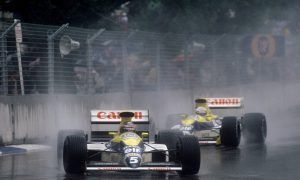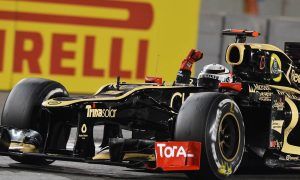FIGHTER PLANE-STYLE COCKPIT CANOPY
The FIA has trialled several systems over the years, with some proving more successful than others.
“We had the fighter jet cockpit approach, but the downsides to that significantly outweighed the upsides,” FIA technical and race director Charlie Whiting told Autosport.
“We also came up with some fairly ugly looking roll structures in front of the drivers, but they can't drive with it as they can't see through it.
“So it's been really, really hard to come up with something that is going to do it.”
The FIA Institute for Motor Sport Safety and Sustainability has also tested polycarbonate windshields and forward roll-hoops, but these are difficult to implement in practice. Some argue such designs are not aesthetic and go against tradition, and what's more they may breach the current technical regulations. Article 13.1.3 reads as follows:
“The driver must be able to enter and get out of the cockpit without it being necessary to open a door or remove any part of the car other than the steering wheel. When seated normally, the driver must be facing forwards and the rearmost part of his crash helmet may be no more than 125mm forward of the rear edge of the cockpit entry template.”
The first concern with jet fighter cockpits comes from their impact on visibility. Canopies need to be both thick and curved, which could result in the drivers having a distorted vision. (While endurance racers are used to driving with windshields on prototypes, the latter are bigger and wider than F1 single-seaters, thus reducing the deformation). Secondly, jet fighter canopies would make it more difficult for the driver to get out of their car quickly, while also limiting safety workers' access to the driver if he or she is injured in an accident.
FORWARD ROLL-HOOPS
Fitting forward roll-hoops has also been considered, but these are fairly inelegant and similarly obstruct the driver's vision. The F1 Strategy Group (which comprises FIA president Jean Todt, F1 supremo Bernie Ecclestone and representatives from six teams) had previously rejected the plan on the grounds of aestheticism.
During last year’s investigation into Jules Bianchi’s fatal accident, Whiting said that a roll-hoop would probably not have withstood the impact, and that the system would in any case have sat too low and failed to provide adequate protection to the driver’s head.
Having reached an impasse on both the canopy and roll-hoop approaches, where does the FIA go from there?









